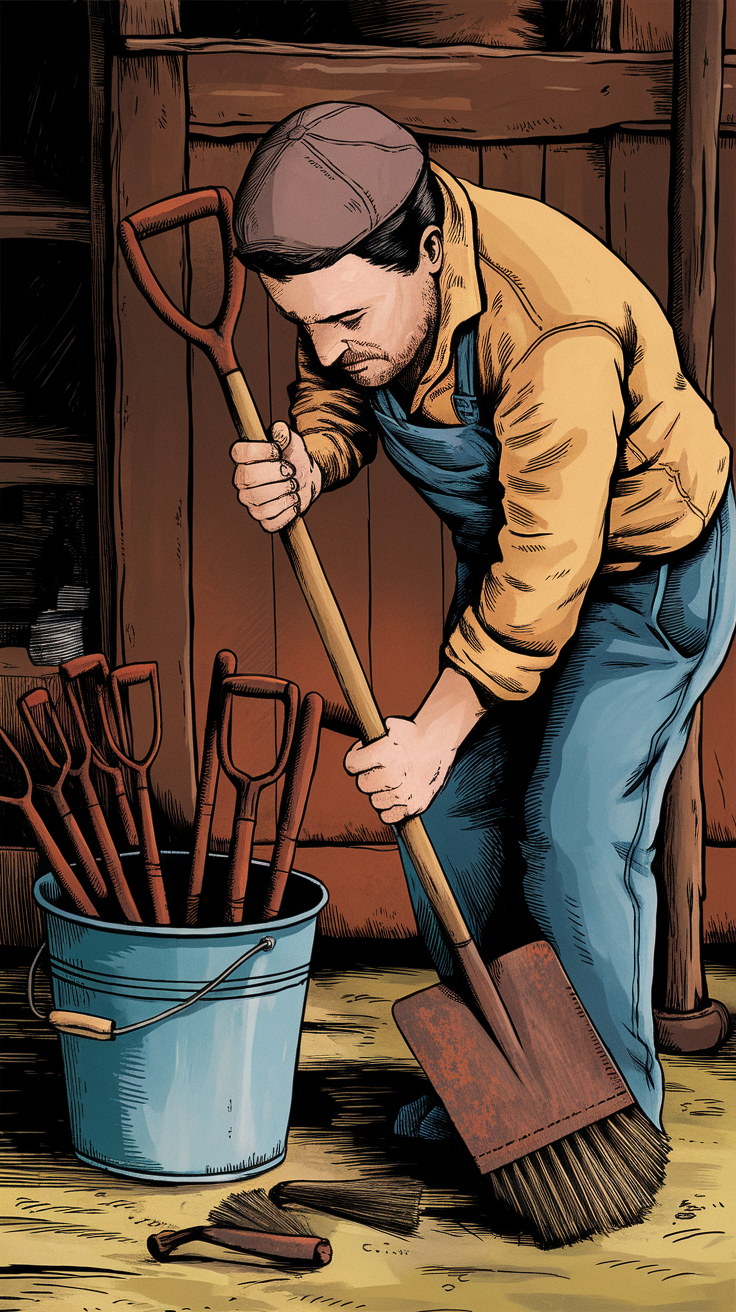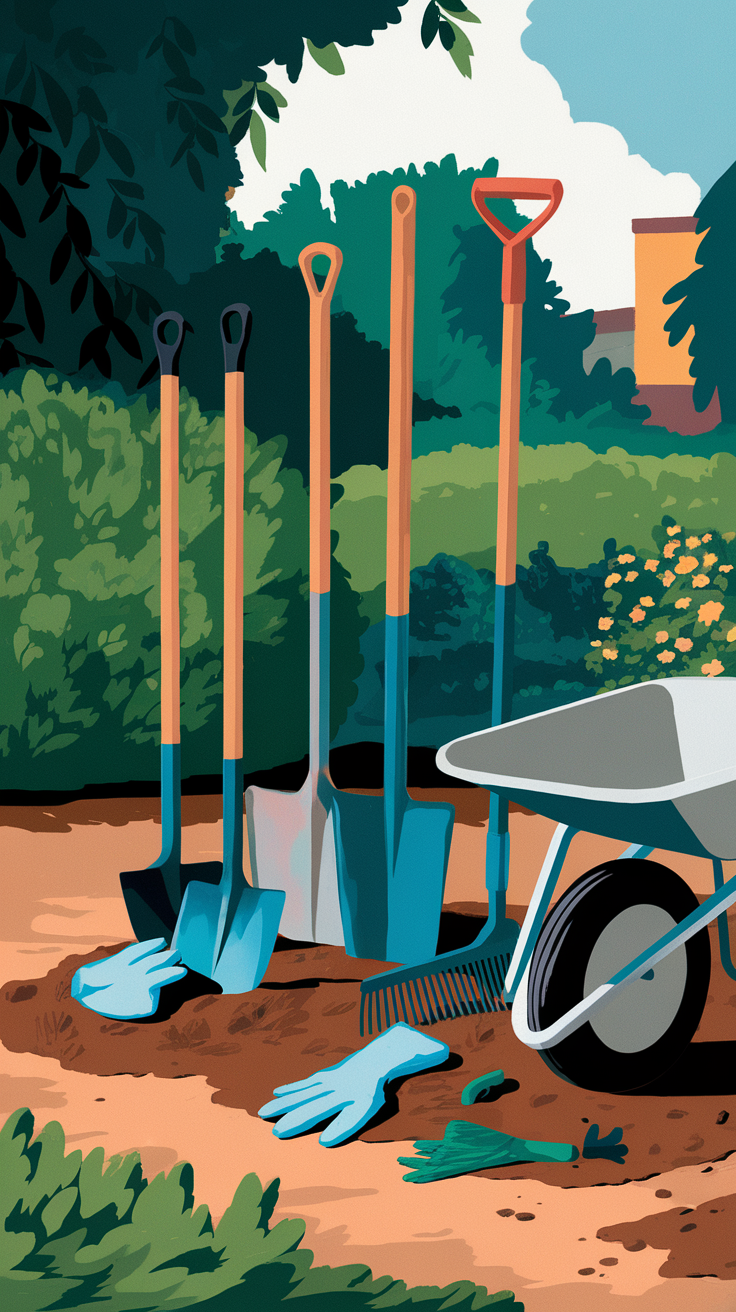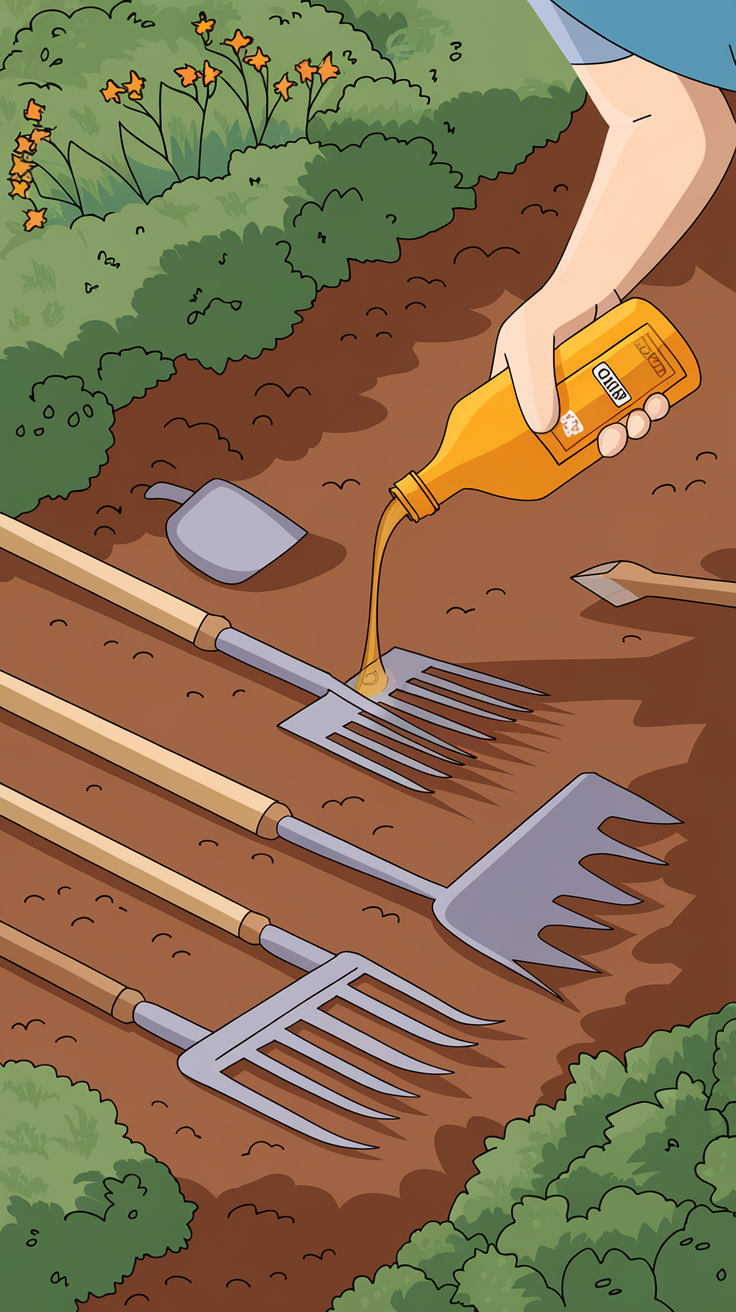How to Keep Your Garden Tools from Rusting in 2025
Introduction
That’s right! Neglected garden tools can lose their efficiency by 30% in a single season and rust contributes to this inefficiency. As such, gardening becomes more of a chore than a pleasurable experience which leads to financial losses.

In this article, regardless of whether you’re a semi-professional or casual gardener, I will share reasonable and straightforward methods to prevent rust from forming on your garden tools throughout 2025.
In this guide, you’ll find everything from why we often forget gardening tools outside to the most common errors made that lead to them rusting.
On a mission to uncover how to save money while also preserving your tools? Let’s get started.
Why Do Garden Tools Rust Even If You Use Them Occasionally?
Despite sounding simplistic, rust is a form of a chemical reaction. Oxidation occurs when moisture and oxygen bond with the iron in your tools. Even though tools are not used regularly, rust will still form due to the surrounding air and increase in humidity.
So why does it seem to be more of an issue in gardening? The answer lies with soil particles and fertilizers which are also residues. The real concern arises when tools are shoved away while still wet or dirty.
Have you thrown a shovel, “just for a week” in the shed only to discover it enveloped in orange patches? Now, you understand why.
The Hidden Dangers of Rusty Garden Tools
As it happens, rest is more than skin deep. When tools rust:
They deplete structurally. Blades become fragile, handles loosen.
They become less effective. Cutting and digging become more strenuous due to added rust.
They disseminate crop infections. Microbes latch onto rusty surfaces and commandeer your garden.
Picking a broken pruner for your most cherished rose bush isn’t an easy choice.
Which Tools Rust the Fastest? Material Matters
Some metals rust faster than others. A quick comparison is as follows:
| Material | Rust Resistance | Notes |
|---|---|---|
| Carbon Steel | Low | Common in cheaper tools |
| Stainless Steel | High | Best for longevity |
| Aluminum | Very High | Doesn’t rust but may corrode differently |
Tip: When buying new tools in 2025, prioritize stainless steel or aluminum models if you want less maintenance.

7 Rust Inviting Storage Blunders and Ways to Avoid Them
Are you making one of these common errors?
Leaving tools outside for the night
Storage of tools without drying them
Storing tools haphazardly rather than hanging them
Keeping tools on grassy surfaces or soil
Putting tools in locked, unventilated sheds
Ignoring minor rust spots
Using wooden handled tools without sealing them
Breaking out of these bad habits can increase the life span of your gardening equipment.
What errors do you admit to? Do not lie, it’s the first step towards getting better.
A Step By Step Guide How To Clean Your Garden Tools After Every Use
Cleaning goes beyond being spick and span, it is vital for the conservation of tools.
A basic cleaning routine includes:
Cleansing of dirt as soon as possible.
Soaking stubborn dirt with a wire brush.
Thoroughly drying the tool with an old towel.
Disinfection can be done if you have pruned infected plants, rubbing alcohol serves the purpose.
A basic five minute routine that can minimize expenses in the long run.
Why Drying Tools Is More Important Than You Think
In the end, freeing tools from moisture is the key to alleviating any chance of rust. Even bits of water can jump start rusting processes. Remember, the best prevention is to dry tools completely before storage.
Quick drying tips include:
Immediate towel rubbing after rinsing.
Airing tools out in hot sunlight pre-storage.
Tools should never be stowed away in plastic bags, as these retain water. Joining the ‘Tools Dried Not Stored in Bags’ can help each member stay vigilant to battle the war against rust.
Consider drying off like brushing one’s teeth: a modest routine that will avert a more significant issue later in the future.
Best oils for protecting surfaces of metal in the year 2025.
It’s like wrapping tools in oil, creating a shield against water. Here are the best options:
3-in-1 oil: widely available and reliably handy
Linseed oil: wonderful for the wooden handles too
WD-40: contemporary favorite for instant protection
If you prefer eco-friendly solutions, new sustainable oils will be available in 2025—be interested!
Every option has its benefits:
WD-40: great for on the go, simple, but you have to reapply it quite a lot.
Petroleum jelly: covers it long while being great at doing so.
Soaking vinegar: great for getting rid of rust that’s already there.
Petroleum jelly is the better option for winter storage while WD-40 works best for quick refreshers under maintenance – a must for tools that are used weekly and cleaned afterward.
Winter can be tough on sturdy metal materials: freezing can cause significant damage to tools. Here’s your prep checklist:
– Every tool needs to be cleaned and oiled.
– Tools must be secured above floor level.
– Use wall mounted racks or pegboards.
– Store moisture absorbing silica gel packets inside nominal containers.
Why not set your shed up using vertical space? It will make organization intuitive and keep everything from tools to equipment well protected.

Suspending hand tools helps in avoiding getting them wet, resulting in easier maintenance down the line.
Ideas include:
Tools can be organized using:
– Wall-mounted tool racks
– Pegboards
– Pallets that have been modified with handle slots
Off the floor storage helps prevent tools from coming into contact with damp concrete surfaces which is one of the biggest causes of rust.
Best Accessories for Protecting Tool Storage
Best accessories to protect tools from damage include:
– Weatherproof cabinets for powered equipment
– Hanging hooks for long-handled items
– Tool belts for small hand tools
When everything has a proper designated spot, taking care of the tools becomes easier.
Is it Safe to Store Tools Inside a Greenhouse?
Short answer: yes, but it is risky.
Greenhouses trap moisture which causes rust. However, if you need to store it there, ensure that you:
– Limit exposure during humid months
– Add moisture absorbers
– Use airtight containers
Sometimes, that “free space” comes at the cost of a lot of hidden damage.
DIY Solutions: Build Your Own Dry Storage Boxes
Why buy when you can do it yourself?
Here’s a simple project idea: Take old wood and build a slotted tool rack. Then line the bottom with a moisture-wicking fabric and paint it for weatherproofing.
It’s entertaining, easy on the wallet, and your equipment will appreciate you for it.
What Anti-Rust Products Will Have In 2025?
Things to keep an eye out for:
Rust inhibitors that are biodegradable
Protective sprays that can heal themselves
Nanocoatings that adhere to metal surfaecs.
Solutions these days are quicker, more environmentally friendly, and last longer. Why not give your tools a better future?
Do Home Remedies Against Rust Still Work?
Clean by soaking in vinegar
Raw potato rub (yes, it’s the oxalic acid!)
Light rust can be handled with baking soda paste.
Grandma’s tips can be more useful than the latest technology. Have any of these been tested by you?
If Rust Has Already Set In: Rescue Procedures Step By Step
Prepare to do some scrubbing with steel wool.
Rinse out and dry thoroughly.
Oil as much as possible before putting it away.
Permenant rust spots can be dealt with early on, but without treatment, they will ultimately destroy your tools.
How Often Should You Do Preventative Maintenance?
Weekly during spring and summer periods where you’ll be actively gardening.
Rest deep clean will do do the month during winter and fall.
Put oil on seasonally after heavy rain and before storing it for the season.
Prevention will always win over a repeat visit “check-ups,” in the world of these tools.
Top 5 Mistakes That Ruin Even the Best Protection
Avoid:
Forgetting to oil after cleaning
Storing tools on wet floors
Ignoring tiny rust spots
Leaving tools exposed to rain
Using the wrong cleaning products
Does any of these sound like you? If so, don’t worry—now you know how to fix it!
Conclusion: How to Keep Garden Tools Rust-Free for Years
In summary, remember to do the following:
Clean and dry tools after every use.
Regularly apply protective oils.
Store tools properly, away from moisture and off the ground.
Maintain and inspect tools periodically throughout the year.
Stay informed with developments of new technologies on anti-rust.
Gardening is way more enjoyable if your equipment works like new every season.
What’s your go to trick for keeping your garden tools in top shape?
Share your tips, and join the discourse below!
